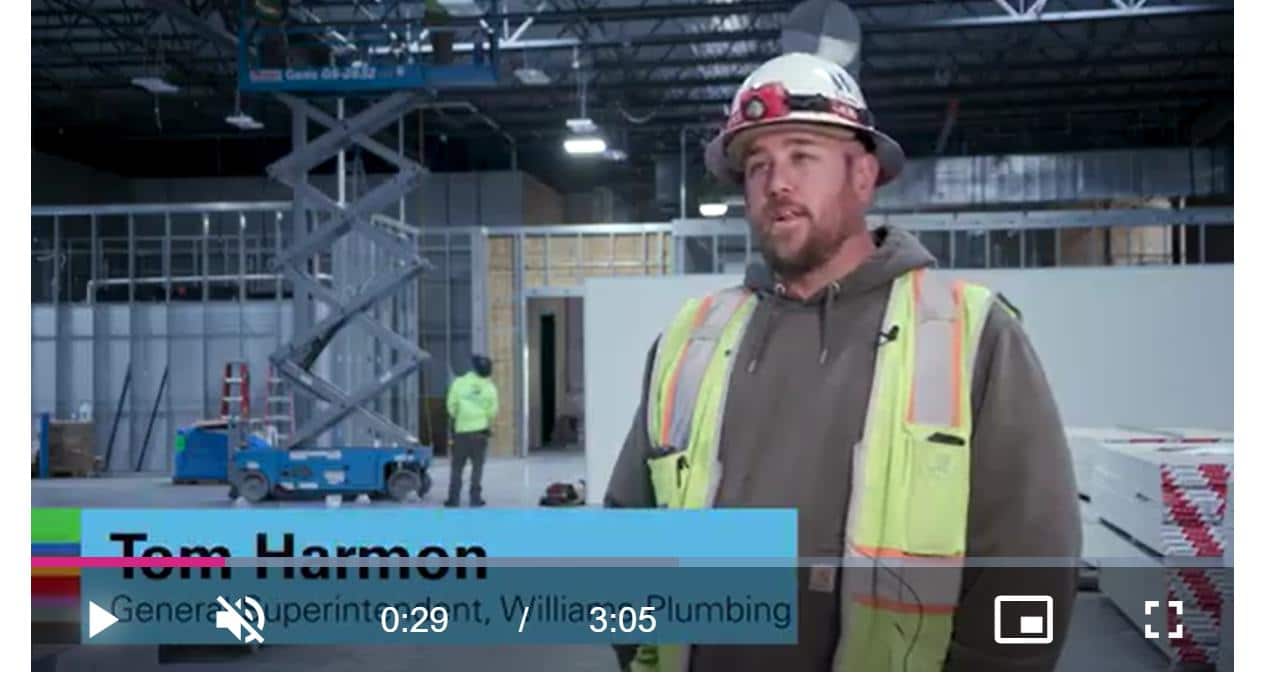Williams Plumbing and Aquatherm
January 27th, 2021

This short, three-minute video is a profile of Williams Plumbing in Bozeman, MT. It features comments from Williams’ personnel as they discuss the features and benefits of aquatherm pipe in commercial plumbing and heating projects, including aquatherm’s light weight, ease of installation, time- and labor-saving fabrication, and full library of CAD and BIM families.
Here is a link to the video:
https://aquatherm.com/videos/why-williams-plumbing-chooses-aquatherm
and here is a transcript:
Chuck Schaeffer, BIM Manager: Williams is a plumbing and heating contractor here in the Gallatin Valley in Bozeman, Montana. We primarily do commercial plumbing and heating projects. We use aquatherm for domestic potable water, mechanical hydronic heating, chilled, and condenser systems. We use aquatherm for the efficiencies of the labor savings and the ease of installation.
Tom Harmon, General Superintendent: So we’re at a major retailer in Bozeman, Montana. They’re using their system as a heat recovery system off of their coolers to heat the building. So it’s a heat recovery system that integrates with heating and cooling and we’re using aquatherm to do it.
Chuck Schaeffer: One of the key benefits of aquatherm for us is the ability to make longer prefabricated spools. Our only limitations are the transportation to the project.
Kim Poole, Fab Shop Foreman: We just moved into our new fab shop. We fabricate the spools anywhere from 19 feet all the way up to 42 feet. And that gets it out into the field where they can go and they erect it much faster.
Tom Harmon: We’re using sizes from one inch up to eight inch, and we’re also using the UV coated pipe up on the roof for the (fluid coolers as chilling for the building.
Chuck Schaeffer: One of the surprises we had with aquatherm is how fast our prefabricated spools go in the field. When we can make them 40, 50 foot chunks, that goes in super fast.
Tom Harmon: The nice part about aquatherm on this project is everything was required to be up in the joist space, so we were actually able to get 40-foot lengths of pipe up into the joists. Whereas if we were using steel, we’d be stuck to the 12-feet because the joists are only six feet apart.
Chuck Schaeffer: aquatherm provides a great Revit family library for us in the BIM world which allows us to model the systems efficiently. And it’s a lighter product that allows us to handle the material easier, and its flexibility gives us the ability to get into tighter spaces. Easier than, let’s say, like a copper or steel piping system.
Tom Harmon: So one of the cool things about this project is the roof slopes in a lot of different directions. So the pipe actually flexes to the pitch of the roof so we don’t have to use a lot of fittings.
Chuck Schaeffer: A couple of us here at Williams Plumbing have gone to Utah to do the train-the-trainer program, which has been a huge benefit to us here to be able to train our own staff. And we have approximately 75 certified aquatherm installers.
Tom Harmon: It’s an easy product to use. It’s not much different than putting in steel pipe. I mean the measuring and the takeoffs, really the same process. I’ve been working with aquatherm for about six years now. I do feel that aquatherm is a good product. I’m all for putting in aquatherm at any building I put plumbing in.
Kim Poole: It’s very fast, very efficient, and it’s enjoyable to work with.